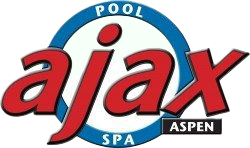Chemical Alternatives
Here is our “Opinion Corner” about all the Chemical options for your spa.
- They can get you confused. Some people even think there are Diamonds involved! Remember that Chlorine sanitizes 99.1% of the world’s germs away. It works very well and is hard to find a replacement. When used properly, with tools like Ozonation, it is the most economical. There is no reason to find another product. Alternatives to Chlorine Sanitation include Bromine, Peroxcide, Baquacil (Hallogen Free), Nature2 (silveroxcide), & Ionization and are available through Ajax Pool & Spa.
- Chlorine tablets with Ozone System vs. Salt Generator System (Salt is not an alternative to Chlorine as it actually generates Chlorine.)First let me explain that I’ve been testing pool and spa water and teaching water balance chemistry for over 4 decades. I’ve heard many pitches over the years and many systems seem to come around again years later, even after they’ve been dismissed. My true test is putting the product into use. My company manages over 300 spas on our routes here in the Aspen Valley and our skiers, tourist and local families know how to put their Jacuzzis to real the test.
Ozone: Fact — both systems are used with chlorine or bromine. With this system, you buy the product in small tablet form and place it in a feeder. The tablets are designed to dissolve over one week. We determine by testing how much chlorine is needed and add it for the entire week. Additionally, Jacuzzi builds a 3-step process to reduce chemical use, proven effective over the last decade:
- The patented ProClear skimmer with high-flow ProStream circulation cycles 35 gallons per minute — the best in the industry.
- The ProClear II filter cartridge, embedded with Microban technology, and the ProCatch polishing bag (J-400 models) remove sand and particles to 2 microns.
- The ProClear ozonator, using corona discharge, produces three times the purifying ozone of standard systems.
With this system, chlorine can be dialed down from 3.0 to 0.5 ppm — very low. You simply test and balance chlorine, pH, and alkalinity. No shocking required.
Salt: In this system, chlorine is generated through electrolysis. You must balance usage, temperature, and salt levels. This system requires a saltwater-compatible spa and careful salt maintenance to prevent corrosion of the heater and seals.
Salt systems do not break down organic contaminants, so you must still add chlorine or a shock product (like MPS) weekly for daily use — or every two weeks for lighter use. You’ll also need to monitor water hardness. Some spa brands require a calcium remover cartridge, adding around $160 to annual maintenance and another step to water treatment.
The titanium plates must be cleaned 3–4 times a year and typically last about 10,000 hours — some units last only 1–2 years. You’ll also test and balance salt, pH, alkalinity, chlorine, and combined chlorine. Additional required products include salt (approx. 4 cups at startup), electrode cleaner, and often a shock or ozone system.
One benefit is the soft feeling of the water. We add a product called “Spa So Soft” — available in a variety of scents. Call Jacuzzi Julie at 970-279-5253 with any questions.
